Douglas Duncan is one of the greatest war correspondents of the twentieth century. He has worked in many places for many years, he worked in the Korean War and is also one of the rare people who can access and keep precious pictures of Picasso in his studio.
In particular, he is famous for his photos capturing haunting moments at the Khe Sanh battlefield during the American war in Vietnam published in Life magazine in 1968. David Douglas Duncan was born on January 23, 2020. 1916 in Kansas City, USA, he had 3 brothers and one sister. From an early age he had a passion for photography. He studied archeology at Arizona in 1934, but dropped out to join expeditions to Mexico and Central America. He then majored in Zoology and Spanish at the University of Miami and graduated in 1938.
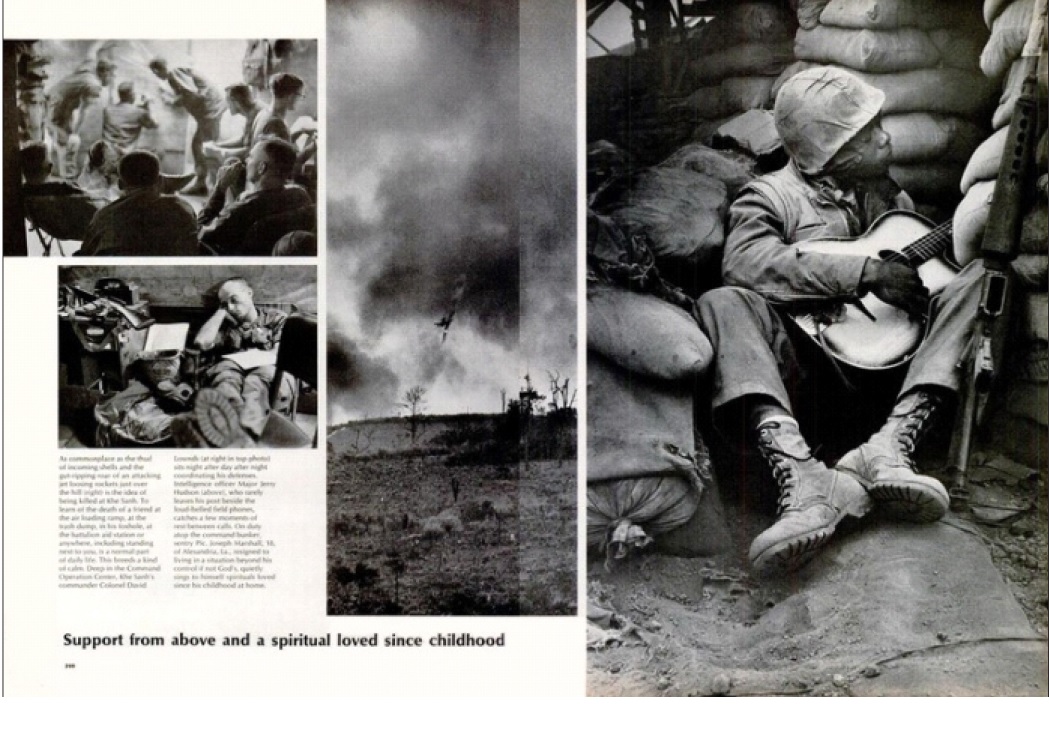
Right photo: Private First Class Joseph Marshall (18 years old, from Alexandria) singing a favorite hymn from his childhood in his hometown - Life Magazine February 23, 1968 - part of Douglas' photo report Duncan.
After the Battle of Pearl Harbor during World War II, he joined the Marines and was both a battlefield photographer tasked with photography in the South Pacific. He was also present on the USS Missouri in 1945 when the Japanese surrendered to General Douglas MacArthur in Tokyo Bay. This laid a solid foundation in his career as a war correspondent. His photographs of the war caught the attention of Life Magazine, and they later hired him to work as a photographer for Life Magazine, documenting events around the world. He traveled to Palestine and photographed the war between the Arabs and the Jews before the founding of the state of Israel in 1946. He was wounded many times in the wars but continued to work in most countries. world hotspots such as Greece, Turkey, Egypt, India, Morocco, etc. As a reporter for Life Magazine, David Douglas Duncan used a Leica M3D-2 camera to take many pictures was iconic images of the Vietnam War, including at Khe Sanh battlefield and published by Life Magazine on February 23, 1968. These photos help the American public clearly see the horror and despair of the US Marines before the attacks of the Liberation Army of South Vietnam.
Like the sound of artillery shells or the roar of jet engines, death is a familiar thing in Khe Sanh. You can hear about the death of a close comrade in a loading dock, a dump, a personal pit, a dispensary, or just about anywhere, even when he's just standing next to you. People can only entrust their lives to God.
During his career, he published more than 20 books. It can be said that Duncan is both active as an artist as well as a politician, because besides 8 books published based on thousands of photographs taken of the artist Picasso in the last two decades of his life, it helps the public They know many paintings that were never displayed when Picasso was alive, Douglas Duncan also published books about the wars he witnessed and recorded such as "This is War!" about the 1951 Korean peninsula conflict and "I Protest!" showed harsh criticism of the US military's participation in the war in Vietnam.
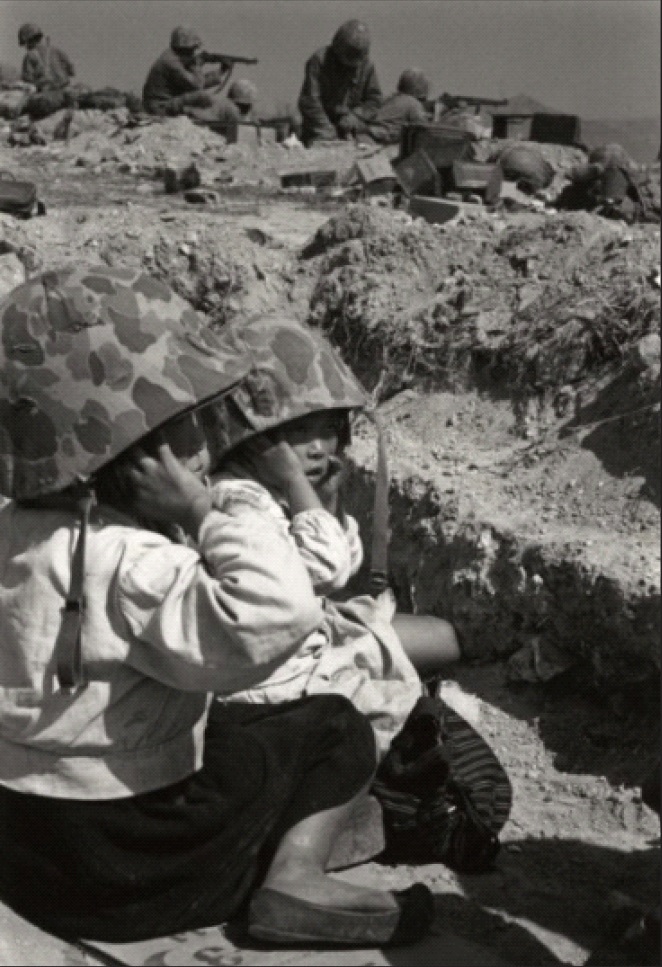
Korean War, 1950
He once told the New York Times: “I don't feel like there's anything compelling about being a battlefield photographer, I just feel that a few people out there deserve to be photographed as they are. run away in fear, show bravery, hide in a hole, or laugh. And I think, I have brought a completely correct view of the battlefield."
The images of American soldiers appearing in Douglas Duncan's photos are not images of the battlefield, just the faces of young men with helmets haunting viewers with tired eyes looking up. The above shows that the war caused by the US made American soldiers feel so scared, that there were soldiers engraved on zippo lighters with the words: "If I die, I will definitely go to heaven. because when I lived, I lived in Khe Sanh hell."
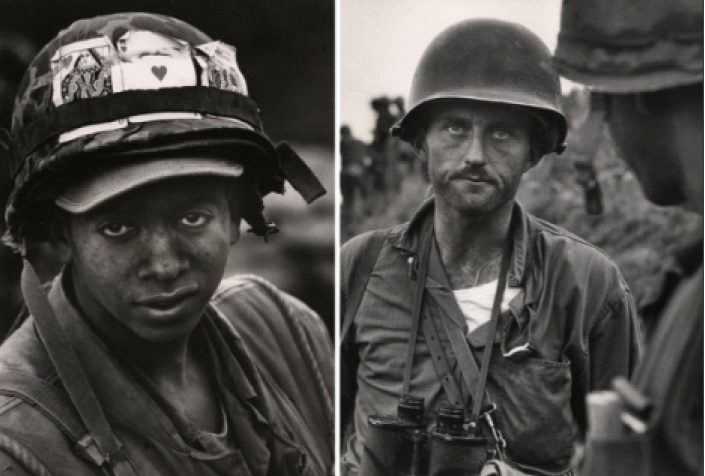
Left photo: Soldier John L. Lewis decorates his hat with lucky cards, Khe Sanh, February 1968.
Right photo: Captain Fenton, commander of Baker Company, 5th Regiment, 1st Brigade, Marines received news of supply reduction in Korea, September 1950.
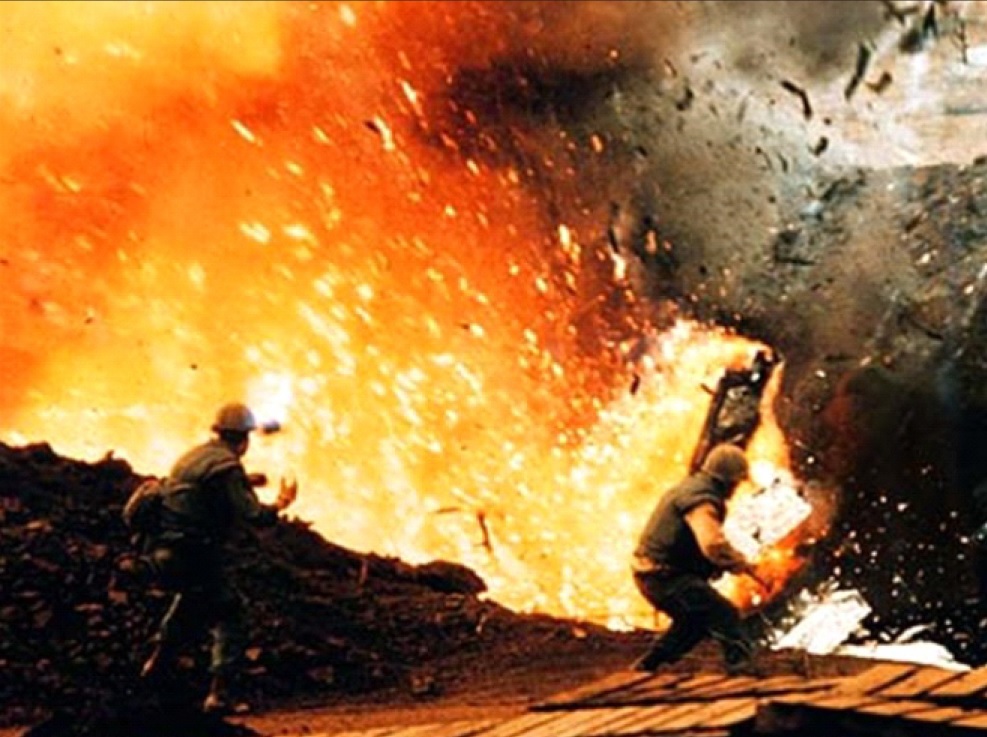
Khe Sanh battlefield, photographed by reporter Robert J. Ellison in 1968, is currently on display in the subject: Requiem - War Remnants Museum.
During this time, photos taken in Khe Sanh by Douglas Duncan with other war correspondents such as Robert J. Ellison, Larry Burrow ignited the anti-war flame right in the heart of the United States. The courage and passion of the war correspondents contributed significantly to bringing the truth of the US war in Vietnam to the world public, but they also faced many dangers. Douglas Duncan is one of the lucky war correspondents who escaped while working in Vietnam, and that luck is not for all war correspondents in this fierce war. But what they did for the truth, for a peaceful world is very valuable things, not only in the past but even today. If you have the opportunity, stop by the portraits of war correspondents who died while working in Vietnam, as well as take a look at their works on display in the Requiem at the Remnants Museum. War, we will somewhat feel more deeply than that.
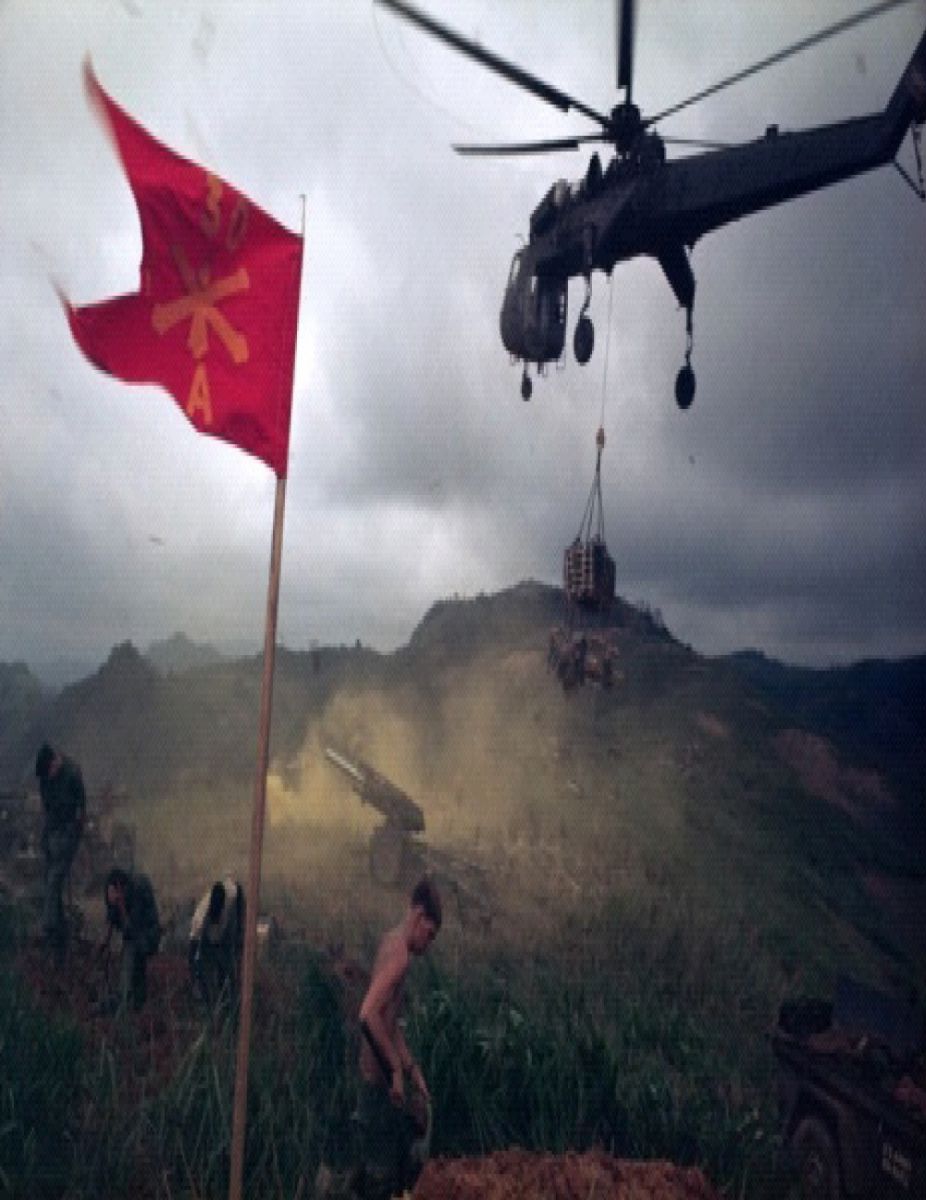
Khe Sanh, April 1968 by Larry Burrow. The photo is on display in the topic Memoirs - War Remnants Museum.
In 2012, David Douglas Duncan's 1955 Leica camera, used during the Vietnam war, was sold for an unbelievable price - nearly 2 million USD (About 40 billion Vietnamese dong) - at a Auction in Westlicht, Vienna, Austria. Talented photographer David Douglas Duncan was laid to rest in 2018 after a life full of dedication, work and photographs capturing the truth about brutal wars, aged 102 years.